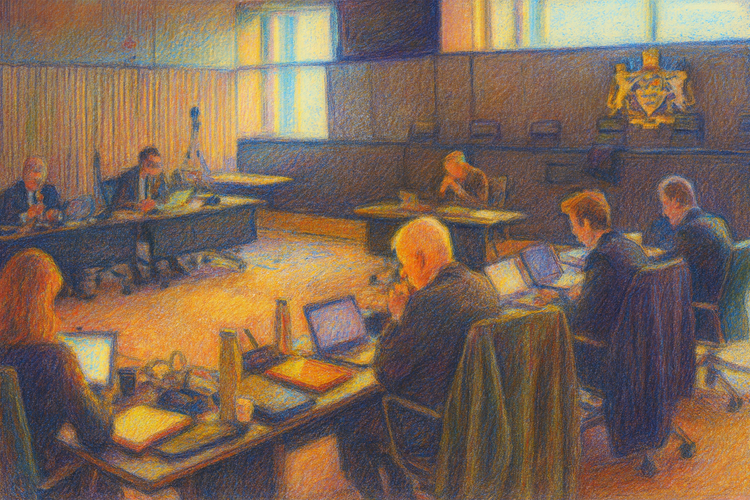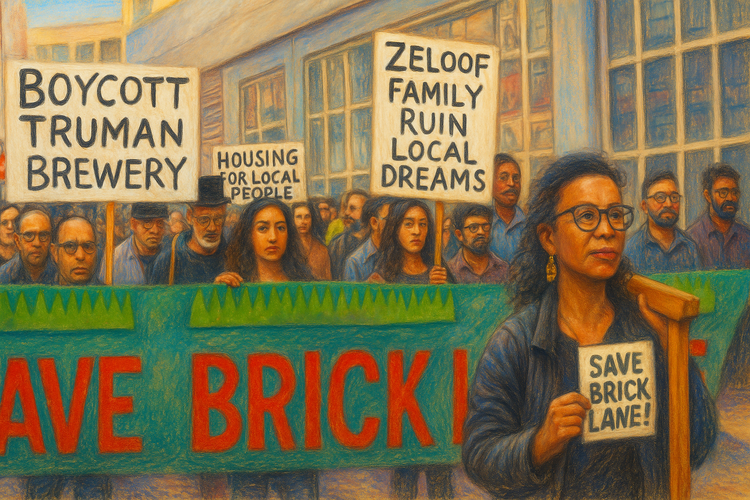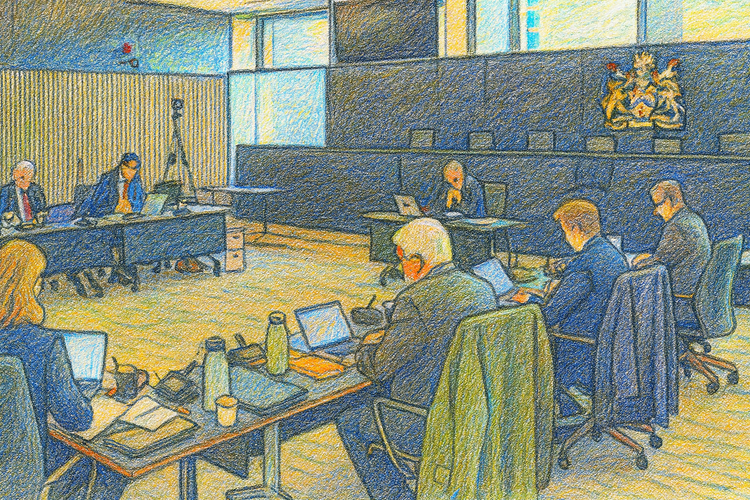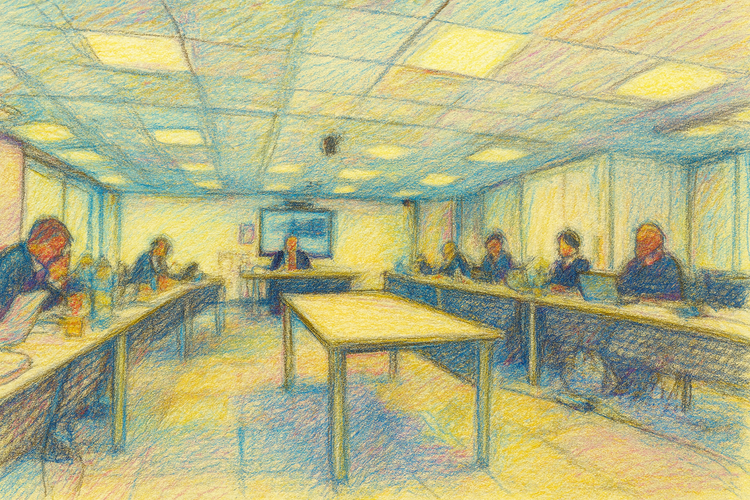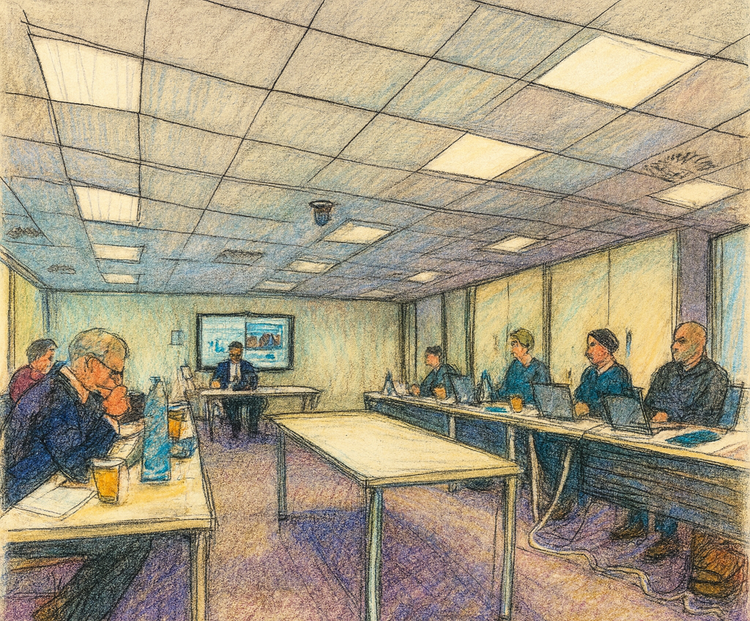Brick Lane Inquiry — Day Three (Afternoon): The Aesthetics of Adequacy
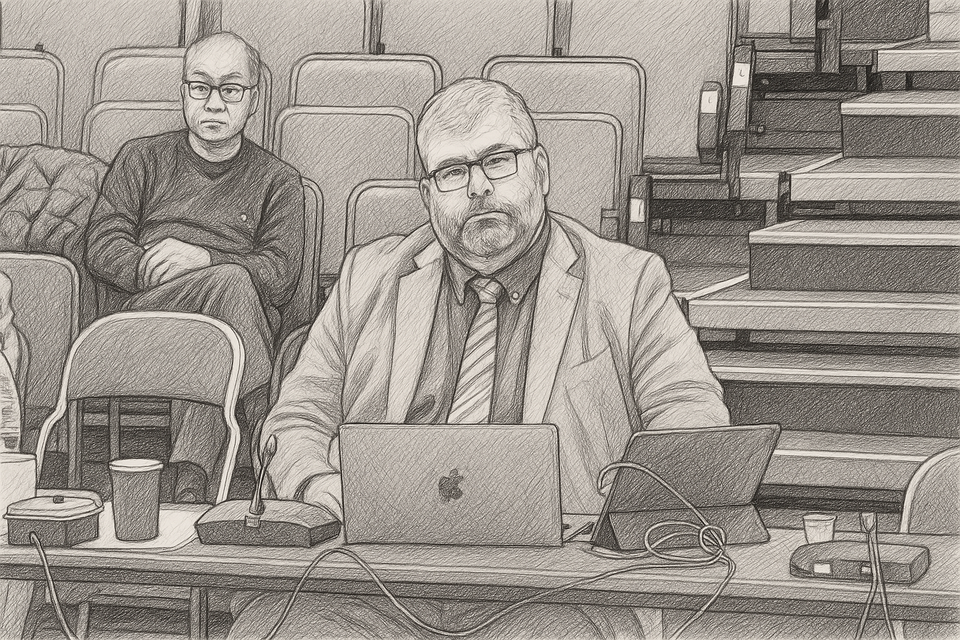
“Every plan conceals a theory of who the city is for.” — after C. Wright Mills
A Shift in Register
After lunch, the hearing returned to design. Paul Reynolds, urban designer and director of Tapestry Urbanism, appeared for the London Borough of Tower Hamlets. Where the morning had been about memory, the afternoon was about form — the physical grammar of the city.
Reynolds spoke quietly, but the structure of his argument was exacting. He was not there to condemn the Truman Brewery scheme as ugly. He was there to explain why it was inadequate — why improvement without excellence still counts as loss.
The Measure of ‘Better’
When Russell Harris KC, acting for the developer, began his cross-examination, he put a simple question to the Council’s design witness:
Harris: “Does ‘better than existing’ make it acceptable?”
Paul Reynolds looked up from his notes.
Reynolds: “No.”
He then referred to the National Planning Policy Framework, reading its guidance aloud for the record:
Reynolds: “Permission should be refused for poor design and improved for the mediocre.”
Reynolds explained that this was more than a procedural rule. It was a principle.
“Something is capable of being better than is there now,” he said, “but not being good design.”
In the rhythm of planning language, those sentences sounded bureaucratic; in the context of the hearing, they were moral. A scheme could rise above dereliction and still fall below duty.
Grey Eagle Street and the Dead Façade
Discussion focused on the data-centre block proposed for Grey Eagle Street. Reynolds confirmed the Council’s position that the design was “inappropriate in respect of design, scale and lack of active frontage.” He acknowledged that data centres are not objectionable in principle but said:
“I would agree, I don’t think you could get a data centre here, but it’s not an in-principle objection.”
The distinction mattered. The problem was not technology; it was place. A windowless cube might serve the internet, but it would mute the street.
Connectivity and Opportunity
Harris turned to the route between Ely’s Yard and Grey Eagle Street, reading from the Council’s Statement of Case:
“The scheme introduces a narrow and ungenerous pedestrian route … fails to improve visual permeability … represents a missed opportunity.”
Reynolds answered simply:
“I agree.”
That brevity said enough. What the developer called “connectivity” the Council regarded as a corridor. For Reynolds, opportunity lay not in access alone but in relationship — the difference between a shortcut and a street.
Adequacy as Doctrine
Throughout cross-examination Harris pressed on the idea that the scheme was an improvement. Reynolds’s response never changed: “Better is not enough.” He explained that planning policy requires good design, not merely acceptable design. A scheme may clear dereliction and still fail the civic test.
In the language of bureaucracy, “better” has become the measure of progress; in the language of cities, it is a ceiling. Reynolds called this the culture of adequacy — the quiet habit of settling for minimal compliance.
Form and Finance
When asked about the scheme’s tight courtyards and narrow passageways, Reynolds observed that every decision appeared “driven by efficiency." He did not speculate on motive, but the inference was clear: geometry follows economics. The design, optimised for yield, left little room for generosity. It was, as David Harvey would say, “accumulation by design.”
Design as Ethics
Reynolds reminded the Inquiry that design is not taste but behaviour. Good design, he said, “performs in context” — a phrase repeated from his written proof. A successful street does not dictate use; it allows it. This was the quiet civic principle behind his evidence: proportion as politics.
Architectural theorists from Jane Jacobs to Richard Sennett have made the same claim in different keys. Reynolds’s contribution was to restate it in policy form: the moral life of a city is expressed in the dimensions of its spaces.
Drawing as Document
Reynolds’s diagrams became instruments of analysis. Where the developer’s visuals measured mass, he measured experience: where shade would fall, how sightlines would close, how courtyards would behave. “Design,” he told the Inspector, “is governance translated into form.” The phrase is recorded in the transcript’s final pages — quietly delivered, but it reframed the afternoon.
Here Henri Lefebvre’s argument felt close: space is produced by those who dominate it. Reynolds showed how domination hides behind the neutral geometry of compliance.
The Ethic of Enough
Late in the day the room seemed weary. Reynolds concluded by returning to first principles: good design, he said, “should leave the city better than it was found.” That much is in the record. But the tone — patient, almost pastoral — gave the phrase new meaning. It was less a professional standard than an ethical minimum: the obligation to improve the public realm not only in form but in feeling.
Coda — Drawing a Line
When the hearing adjourned, the screen still showed the Brewery elevations — rectilinear, disciplined, defensible. Outside, Grey Eagle Street remained what it had always been: patched, noisy, open to chance.
The day’s testimony distilled a paradox at the heart of London’s planning culture. In a city governed by metrics, adequacy has replaced ambition. Reynolds’s evidence, stripped of rhetoric, was an act of civic conscience — a reminder that architecture is never neutral and that the measure of a plan is not what it builds, but what it permits others to become.
About the Thinkers & Further Reading
| Thinker | Key Work / Link | Central Idea |
|---|---|---|
| C. Wright Mills | The Sociological Imagination (1959) | Connect private experience to public structure; moral clarity in analysis. |
| Jane Jacobs | The Death and Life of Great American Cities (1961) | Street diversity as the foundation of civic life. |
| Richard Sennett | The Craftsman (2008) / Building and Dwelling (2018) | The open city and the ethics of making. |
| Henri Lefebvre | The Production of Space (1991) | Space as a social product; power expressed through form. |
| David Harvey | Rebel Cities (2012) | Urbanisation as capital’s main engine; design as accumulation. |
Editorial note: This report is a fair and accurate account of open proceedings at the Truman Brewery Public Inquiry and is protected by qualified privilege under Schedule 1 of the Defamation Act 1996; commentary reflects the author’s analysis in line with NUJ and IPSO standards.
